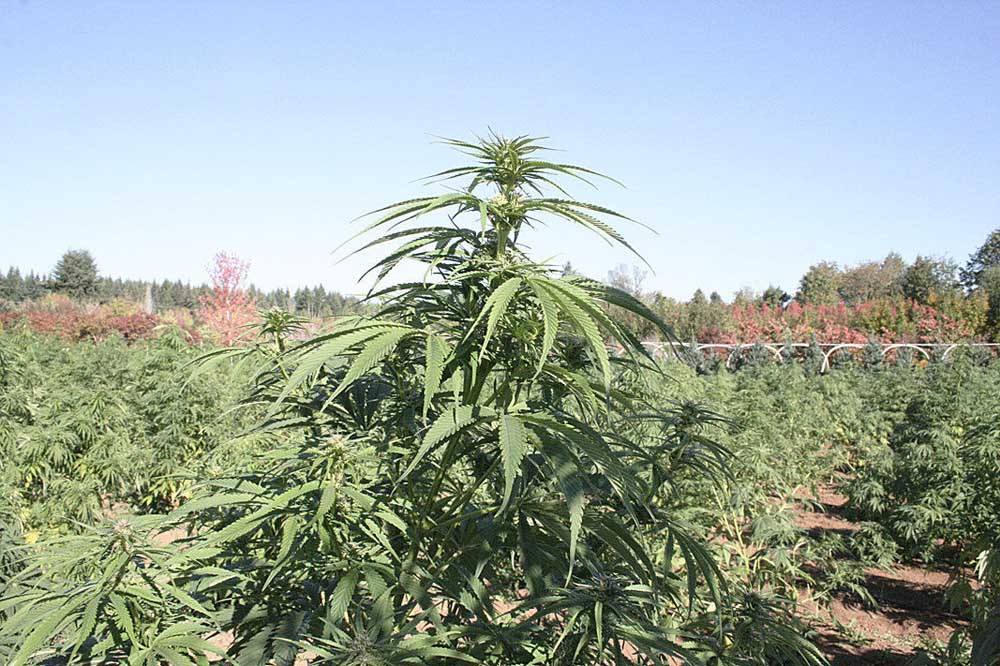Study reveals widespread misuse of water at Southern Oregon hemp farms
Published 8:45 am Friday, February 19, 2021

- Hemp grows in an Oregon field.
Suspicions about unlawful hemp irrigation in Southwest Oregon proved to be well-founded after an audit uncovered violations at one-third of the grow sites visited.
Officials from the state’s Water Resources Department reviewed 187 hemp farms in the region last year and determined nearly 33% ran afoul of water laws.
“There is a large part of this that’s education and outreach — folks just didn’t know,” said Jake Johnstone, the department’s southwest region manager, during a Feb. 18 meeting Thursday of the state’s Water Resources Commission.
Most of the violations — 46 out of 61 — related to hemp farmers who irrigated with well water despite lacking water rights, including some who had valid surface water rights. Domestic usage of well water is allowed without a water rights permit in Oregon, but not commercial irrigation.
More than one-third of the violations identified by the agency resulted in enforcement action, such as having to install water measurement devices on their wells, Johnstone said.
The agency is planning to conduct further reviews in 2021, which will determine whether compliance improved after the initial audit, said Scott Prose, an assistant watermaster in the region.
“What we will see this time around is how valuable that education really is,” he said.
About 42% of the hemp growers visited said they’d been trucking in water from municipal sources, which required a “big time commitment” to verify with receipts and contracts, Johnstone said.
“This can be difficult when the individuals on-site don’t keep any of the financial records,” he said.
He notes that state agencies are working to better maintain contact information for people responsible for grow sites.
Part of the audit’s purpose was to work out such kinks, helping to regulate irrigation compliance on hemp farms elsewhere, Johnstone said. With about 1,000 grow sites, Southwest Oregon has about half the hemp operations in the state.
“We hope to take this process on the road to support other watermasters,” he said.
Bruce Corn, a commission member and farmer near Ontario, said he was concerned that less than 20% of the grow sites in Southwest Oregon were visited during the audit, which seemed to indicate the agency was short-handed.
“Eighty percent were lucky and didn’t get checked,” he said. “There appears to be a pretty large problem from the data you brought back.”
Funding for the audit and additional staffing was provided by the state’s Department of Agriculture, which shifted money to the water resources department specifically to study irrigation on hemp farms last year due to complaints about unlawful water use.
Hemp production in Oregon boomed after pilot projects were federally permitted in the 2014 Farm Bill and then the crop was legalized in the 2018 Farm Bill.
The ODA has figured out a way to continue paying for the additional water rights scrutiny for another biennium, though the approach probably won’t be permanent, said Lauren Henderson, the agency’s assistant director. The agency is also asking lawmakers to pay for four more hemp enforcement positions at ODA during this legislative session.
“We haven’t been able to keep up, particularly on the enforcement side,” Henderson said. “We do need to improve our presence down there and we are working to do that.”
While some of the problems with water rights are due to growers willfully abusing the system, many simply didn’t understand the complexity of water law when they began producing hemp, he said. “We had a lot of growers who were new to agriculture and saw hemp as a way to get in.”






